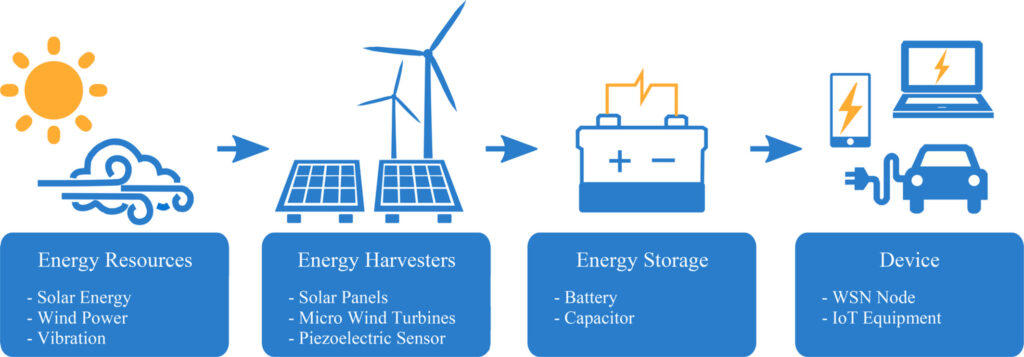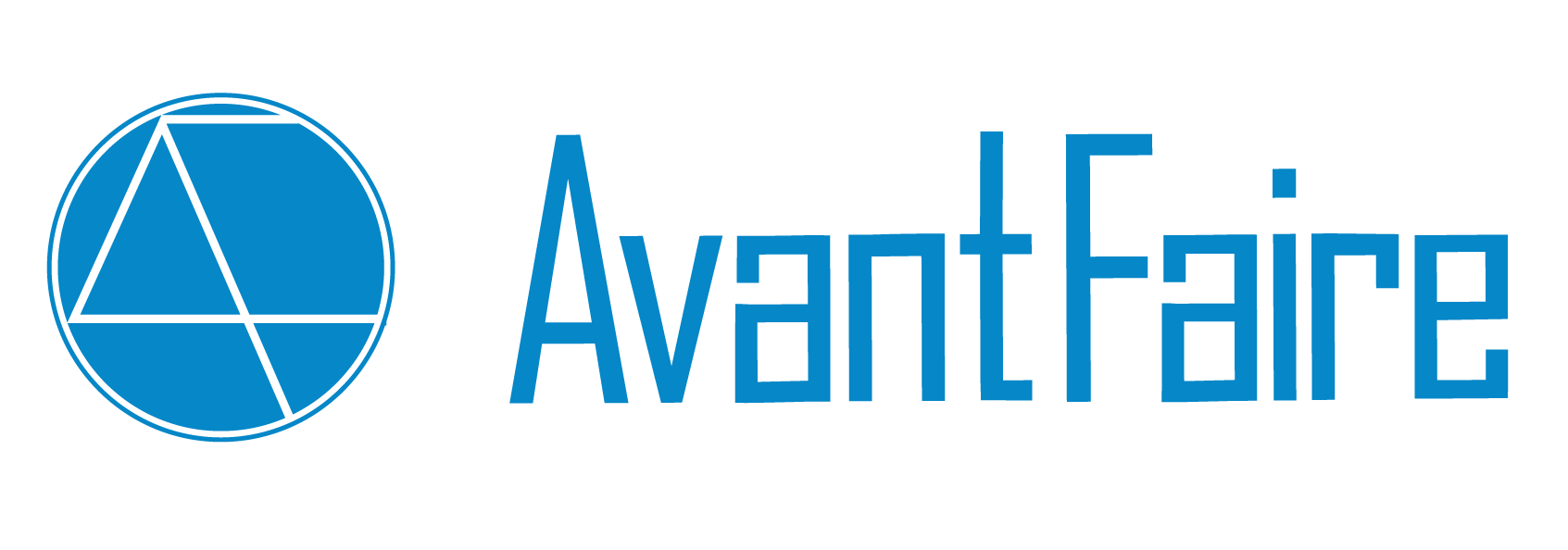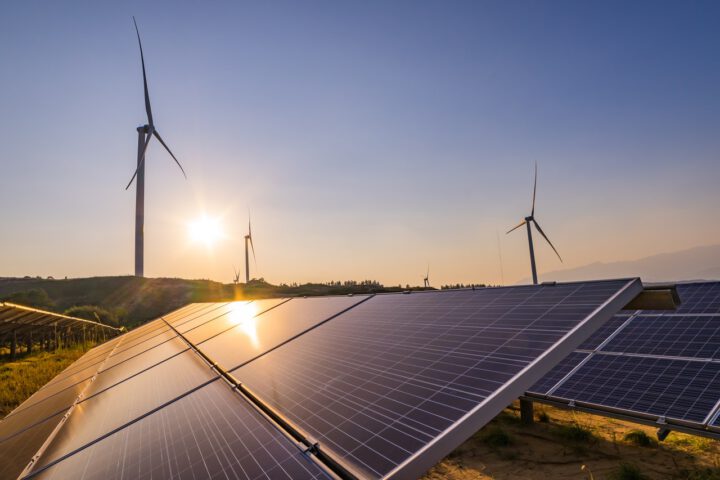For people who are living in modern cities such as New York, London, Tokyo and Shanghai, it would be hard to imagine a life without mobile network or WiFi, not to mention how to survive power outage if by any chance it happens. It’s just out of imagination.
But the fact is that ultimately we will run out of fossil fuel in forty to fifty years time; whereas there are still 789 million people in the world living in a live lack of electricity.1 That’s why the UN SDG7 aims to ensure access to affordable, reliable, sustainable and modern energy for all.
A month ago, we discussed how carbon capture, utilization and storage (CCUS) technology is helping many traditional power plants and factories to achieve energy transition process step by step towards clean energy.
We would like to take a step forward to find out how technology is shaping the future hybrid power plants, enhancing energy storage, and building a better monitoring and forecast system for power usage.
Solar + Wind
Hybrid systems, as the name implies, combine two or more modes of electricity generation together, usually using renewable technologies such as solar photovoltaic (PV) and wind turbines. Hybrid systems provide a high level of energy security through the mix of generation methods, and often will incorporate a storage system (battery, fuel cell) or small fossil fuelled generator to ensure maximum supply reliability and security.2
Due to the limited sunlight hours, a sole-solar power system must generate enough power in approximately 5 hours, and store those energy to last for 24 hours. When adding a wind machine to a solar power system, the size and cost of the latter will be reduced to a point where saving equals out or exceed the cost of adding the former.
In much of the United States, wind speeds are low in the summer when the sun shines brightest and longest. The wind is strong in the winter when less sunlight is available.3 Because the peak operating times for wind and solar systems occur at different times of the day and year, hybrid systems can provide relatively stable power supply during any weather cycle of sun, wind, rain clouds, etc.
According to NASA, this solar+wind combination may work perfectly on Mars, since wind power and solar power may complement each other.4 When there is a large dust storm blocking the sunlight on Mars, a wind turbine can still generate electricity.
Solar + Wind + Storage
For the time when neither wind turbine or solar panels are working, the hybrid systems have to provide power through batteries. Some hybrid plants may have extra engine generator powered by conventional fuels. If the batteries run low, the generator can provide power and recharge the batteries. As such energy storage might be the game changer to ensure stable and flexible power supply.
Smart storage technology can allow plants to store more energy when renewable resource (e.g. sun and wind) availability is high and electricity demand is low, thereby stabilising grid voltage and frequency and improving grid resiliency.
Thanks to technology and the dropping of prices, batteries storage is reshaping the landscape in the power sector. Massive battery storage is the quick answer to the key challenge for green energy — the intermittency of wind and solar.
California is currently the global leader in the effort to balance the intermittency of renewable energy in electric grids with high-capacity batteries. The rest of the world is rapidly following suit. Recently announced plans range from a 409-megawatt system in South Florida, to a 320-megawatt plant near London, England, to a 200-megawatt facility in Lithuania and a 112-megawatt unit in Chile.5
Storage can be deployed not only within the power plant, but also at an individual consumer’s home or office. Electric Vehicles (EVs) can also be a form of power storage, making it more flexible for end users to arrange their power usage.
.

Source: Wiley Online Library
Solar + Wind + Storage + Sensors
Although deployment of storage could overcome the cycling between oversupply and shortage of sun and wind, yet if we can better predict the amount of power used for certain area, then maybe we don’t even need such massive storage facilities.
With the information and communication technology (ICT) becoming more and more sophisticated, and the cost of deploying ICT keeps declining, there are more and more “smart grid” that can optimize energy consumption and help users to reduce carbon footprint.
As sensors and processors continue to get cheaper, it is more possible than ever to track power usage of individual devices and share such information in real-time over the network. Advanced techniques in artificial intelligence (AI), machine learning, data fusion and data mining can be applied to make sense of the sensor data and make the grid “smarter”.
The road to the smart grid is paved with sensors. A smart grid wouldn’t be smart unless it knows about real-time conditions in homes, offices, and manufacturing plants. Sensors help power grid monitoring voltage, current, vibration, and temperature, to keep the grid resilient against power surges and outages.
The current trend is to use optical sensors, which provide higher accuracy and precision while remain safely isolated from the current. Optical sensors don’t carry any of the inherent risks associated with traditional sensors due to the non-conductive nature. They don’t degrade from excessive loads, they present no violent failure risk, and they don’t require current interruption for installation and maintenance.
With the help of optical sensors and smart data system, hybrid system can truly become smart and benefit both the energy plant and the end users. That’s why we’re seeing more and more major utilities in the US and Europe deploying such technology and products to their power grid. We believe this trend would further expand to the whole world to achieve SDG7 and make clean energy more accessible across the world.
References:
1 https://sdgs.un.org/goals/goal7
2 https://en.wikipedia.org/wiki/Hybrid_power
4 https://www.nasa.gov/centers/ames/news/releases/2001/01_72AR.html
5 https://e360.yale.edu/features/in-boost-for-renewables-grid-scale-battery-storage-is-on-the-rise
.
.


The answer is blowing in the wind – Avantfaire Investment Management Limited
[…] carbon pricing help balance economic and environmental needs. We explored how technology help build smarter grid that combines solar and wind powers, and how optical sensors enable power grid to monitor the […]